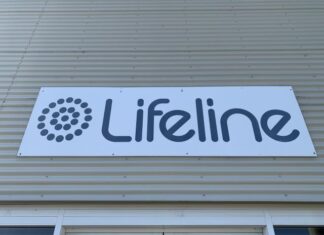Residents are being urged by council and vets alike to take care of magpies as swooping season sets in.
It’s time for magpies to start nesting and the Southern Downs Regional Council wishes to advise residents to take care in our parks and on the streets.
Magpies are only aggressive for about six weeks of the year, around August/September, when they have chicks in the nest. They fiercely defend their nests and territories by swooping any perceived threat.
“With the warmer weather and beautiful days at this time of year, people are starting to venture outside. Many people enjoy going for a walk and if they venture through magpie territory they may be considered a threat by the magpie,” advised Council’s Manager Parks and Major Projects, Michael Bell.
Taking simple precautions is the best way to avoid the dreaded swoop. Helpful tips on how to stay safe from swooping magpies can be found on the Department of Environment and Heritage Protection website at www.ehp.qld.gov.au/wildlife/livingwith/magpie_safe.html .
“If a particular bird is harassing you repeatedly, choose a different route for the next few weeks, wear a broad brimmed hat and if you are riding a bike, make sure you wear your helmet,” Mr Bell added.
However, if a magpie that is defending its nest becomes aggressive and a risk to human safety, the magpie may be removed. Please report serious magpie threats to Council in Warwick on 4661 0300 or in Stanthorpe on 4681 5500.
Spring is high season for swooping magpie attacks and the Australian Veterinary Association (AVA) warns people to take precautions around places where magpies nest.
Native birds such as Australian Magpies are highly protective of their eggs, nest and young and will often swoop at unsuspecting passers-by if they feel threatened.
President of the AVA’s Avian special interest group, Dr Kimberley Earl said that some magpies can become highly aggressive during breeding season, from late August to early October.
“Tolerance is the best policy. We need to appreciate that some magpies will defend their territory from intruders because of a natural instinct to protect their offspring.
“Fast moving objects such as people on bikes and anyone who moves towards their nests are perceived as threats and are likely to be swooped on. Dog walkers are also a common target.
“Other native Australian birds that are also common culprits include butcherbirds, kookaburras and plovers, but even invasive species like Indian Mynas can attack at this time of year,” she said.
“Think about using different pathways because moving the bird is not an option. Wildlife is protected and this type of action can lead to a more serious attack and in some cases, the death of the bird.
“We’re lucky to live in a country where we share our suburbs with such amazing birds, so we simply need to find a way to live in harmony,” Dr Earl said.
Get the latest news to your email inbox FREE!
REGISTER




